R.E. Kearney's Blog, page 11
November 25, 2021
Progress with Anti-Gravity Tech
Everyone must have heard the tales of secret technologies created by the USA, Russia, and various other global agencies. For instance, anti-gravity technology has always been mentioned multiple times by the great scientists of NASA and DARPA, especially during the discussions about UFOs.
However, the serious investigation and discussion into such technology has so far been elusive to leading scientists, or at least, was until November 2020. It was the beginning of an evolution that brought the leading scientists from NASA, DARPA, and Harvard on a single platform through the Zoom app, in an open discussion about anti-gravity tech.
Anti-gravity discussion – Is it a Taboo?
On 10 November 2020, and nearly a year into the covid-19 pandemic, Google meetings, and Zoom calls had become commonplace. However, the scheduled conference was confidential, and the individuals were anything but ordinary.

Far from the myriad of online meetings held since last summer, the introductory Alternative Propulsion Energy Conference (APEC) was created to provide scientists an opportunity to discuss anti-gravity by using alternative ideas besides mainstream science. Undoubtedly, theoretical physics is respectable, but the conference was steering towards engineering, which ultimately leads to new experimental methods, all with a mutual goal of trying to comprehend and hopefully understand the most significant force in our universe, gravity.
According to The Debrief’s reports, the experts have attended almost 22 virtual meetings to discuss Non-Newtonian Propulsion, and Unidentified Aerial Phenomena (UAP).
Avoiding conflicts:
During an interview, conference organizer Tim Ventura notified The Debrief about the convergence of the Alt Propulsion community, and how they’ve collided between the theories of aerospace, defense, electrical engineering, UFOs, physics, and the frontier science cultures.

Tim further stated that they’re acquiring residents from all of these cultures who attend the conferences, regardless of having different beliefs from others on certain topics; they avoid providing room for any conflict.
According to The Debrief, despite the unusual subject, 16 out of 71 witnesses at the November conference were current or prior NASA scientists and engineers, while the others were associated with well-known institutions including, MIT and Harvard.
UFOs in the spotlight:
The subject of UFOs created a pivotal pop-culture revival this year, with military pilots discussing their. Previously, every scientist was aware of UFO reorts, but due to the lack of acknowledgment, they weren’t utterly relevant. With that said, the scientific community is now examining the subject more seriously than ever.
Regardless of their exceptional efforts, gravity remains unbeaten.
November 18, 2021
Lab Grown Meat
As meat consumption increases around the globe, food scientists are working harder to develop healthier, appetizing, and more sustainable plant-based protein nutrients replicating meat as well as poultry products including, cheese, eggs, and milk.
According to a BBC report, over 100,000 genetically modified barley plants are being grown in a greenhouse in Iceland for producing artificial meat. These genetic alterations along with the natural evolutionary changes have resulted in ordinary food that are now genetically distinct from their ancestors.
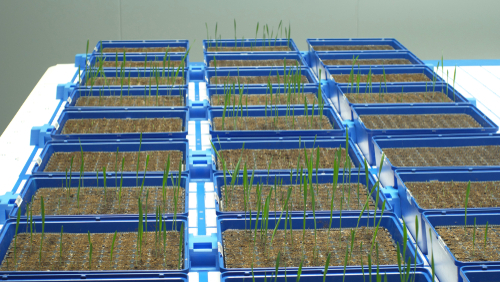
The modified barley was gathered and refined with an aim to eliminate the human race’s reliance on living animals in the meat sector. With meat production contributing to approximately 60% of all greenhouse gases, such a progression could have profound implications in our fight against climate change.
Utilizing Cultivation methods:
ORF Genetics, the organization behind the greenhouse is harvesting the biogenetically changed barley over 22,000 sq. feet by utilizing futuristic hydroponic cultivation methods. The growth factors that are uprooted from the barley’s seeds are of pivotal importance for the well-being of stem cells. In 2010, ORF created a skin care product by using the growth factor hormones. Over 10 years, the platform expects to enter the cell-cultured beef market. Growth factor hormones help the tissues containing animal muscles and fatty cells.
ORF Genetics director of protein technology, Arna Runarsdottir, reported to the BBC about the rise in population and how they’re responsible for their nourishment. Fortunately, artificially prepared meat would offer a plethora of benefits that might help feed the world if researchers could figure out how to produce it for the masses.

How it becomes a matter of concern?
The extract of Mesokine from a barley seed is said to be a budget-friendly and scalable technology compared to traditional growth factor sources.
Indeed, the cost of producing cell-based meat has decreased over time. For instance, a Chinese biotech company has recently revealed its lab-grown pork. However, the growth factor hormone is still a luxury ingredient that blocks the way of extensive manufacture and commercialization, but Mesokine might change that.
Social disruption ahead:
Beneficial outcomes of these genetic modifications include enhanced food production and improved nutritional values. These objectives continue to motivate research companies who have designed modern genetic modifications for recognizing, selecting, and analyzing individual living organisms that possess genetically attractive features.
In any food industry, there’re plenty of players, and some are more focused on sustainability than others. As an undetermined technology, it suggests that synthetic lab grown food might be harmful to the livelihoods of farmers, certainly in the progressing world. While reporting to the BBC, Arna Runarsdottir said that it’s a more reliable and environmental-friendly option compared to traditionally grown meat.
November 11, 2021
The Future of Humans and Robots
Presently, Neuralink is developing brain-computer interfaces, and judging by the CEO’s role at the company, the platform is striving to enable machines and human to work as one, despite his recent statements.
Furthermore, Neuralink officials have reiterated multiple times that machines will replace the manual worker, and it’s a warning that will cause many to worry about the progression of cutting-edge technologies. The platform suggests that humans must physically merge with robotic advancements or become obsolete.
The fate of humanity:

The deceased co-founder of Neuralink, Max Hodak has predicted a creepy clichéd story on the fate of human beings. He implied that robots will occupy space and will leave the human race behind. The keystone to his argument suggests that robots probably won’t cling to humanity’s political and economic models for a community.
The former co-founder believed that the ‘value systems’ that humans have used for structuring societies for decades, might become irrelevant in the coming years. He further expressed his belief about the flexibility of machines and how well-organized they are.
From the beginning, Max Hodak was cautious about the arrival of robots and how dramatically they’ll reshape the world. However, there is extensive reluctance to even identify it as a tangible issue, making it harder to seek for potential solutions to prevent potential adverse impacts.

In the late 1990s, researchers began placing instructions within the brains of paralyzed computer cursors to let them display the movements of robot arms through signals. Also, it analyzed how mice with visual impairment could perceive infrared rays. Relying on these experiments, Neuralink hopes to progress the development of a brain-computer interference to the point that every individual could operate computers with brain signals efficiently.
Mankind’s progression in robotics will permit us to proceed with efficient ways to identify future obstacles, but, according to Max Hodak, this kind of transformation requires an entire generation. However, if there ever becomes a situation where a human’s input becomes unnecessary, machines can effortlessly proceed without it, and it would ultimately lead to our termination from the technological world.
November 4, 2021
Covid-19 Origin Examined
According to CNN reports, China is preparing to run tests on tons of blood samples collected and stored in Wuhan to uncover the origins of Covid-19 in the following weeks.

Wuhan is located in central China’s Hubei province and is considered as the source of the global pandemic. During the initial stages of the pandemic, researchers suggested obtaining blood samples from the urban residents so they might help examiners discern how the pandemic started.
In a report by the World Health Organization, a foreign team of investigators visited Wuhan to probe if the collected blood samples contained antibodies to the virus or not. If stored correctly, the samples could contain significant signs of the first antibodies produced by humans against the disease.
Escalation of Covid-19 in Wuhan:
Chinese officials confirmed the spread of the virus in Wuhan in 2019. Unfortunately, China has been criticized for not revealing enough information or being sufficiently transparent as researchers have been working to comprehend the virus’s origin.
Chinese executives have kept more than 200,000 samples at the Wuhan Blood Centre in case the blood samples are required as evidence against any lawsuits. Some of these samples, which were collected at the beginning of covid-19, have to be reserved for two years as per the Chinese regulations.
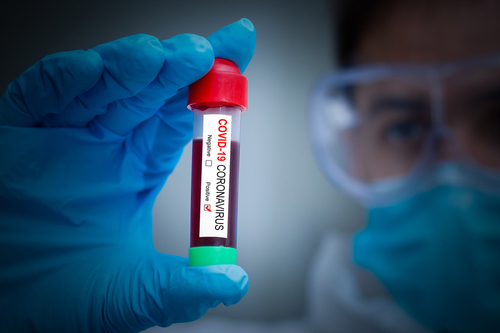
In an interview with CNN, a senior fellow for global health, Yanzhong Huang stated that it provides the closest insights to the appearance of the covid-19 pandemic and helps us easily acknowledge the timings of an outbreak.
Assumptions by experts:
Previously, the World Health Organization announced the investigation into the spread of Covid-19 in China, given that its origin remains unconfirmed. Some researchers and politicians from the USA have already blamed China for concealing the causes and studies of the outbreak, claiming that the virus has leaked from a science lab in Wuhan.
Numerous scientists concluded that probably the pandemic escalated through an insect-like animal, or possibly a bat that might have passed the virus onto an intermediary host that infected human beings, possibly at a wild creature farm in Southern China.
Several WHO officials who formerly visited China stated that Chinese executives refuse to provide any confidential information that might have helped determine the source of Covid-19.
Are Chinese pandemic reports trustworthy?
If researchers are fortunate, the blood samples might emerge with antibodies against the Covid-19, which might serve as a proxy for the appearance of a pandemic. However, with the increasing unreliability, the question is whether Chinese officials will conduct the research with their standard of secrecy or if the transparent reports will make it to the external world.
October 28, 2021
Jupiter Collision
Recently a huge item collided with the gas goliath, making a little “poof” in the planet’s environment.
However, the biggest planet in the Solar System frequently pulls in space debris because of its remarkable gravitational force, which helps to shield the Earth from similar collisions.
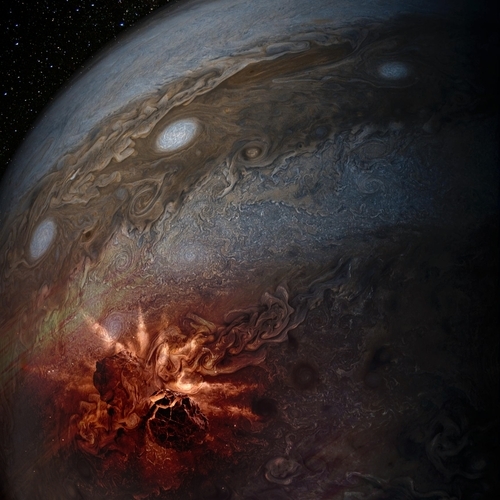
On Monday, Brazilian stargazer José Luis Pereira filmed an abrupt blaze on Jupiter. The concise film shows an item colliding straight with the planet.
Planetary researcher Paul Byrne isn’t exactly certain whether the article is a space rock or a comet.
“We do realize that it can’t have been too enormous — pictures of Jupiter since the effect don’t show an effect scar.”
The article suggest the item might have been twenty to thirty meters in size. So this little item most likely detonated in Jupiter’s upper climate since sufficient size and speed to truly penetrate through and leave behind a scar would be necessary.
Because of its humongous size, its orbit brings it near to the space rock belt, regularly bringing it into a collision course. The most renowned episode occurred in 1994 when pieces of the Shoemaker-Levy 9 comet slammed into Jupiter. The comet had been circling Jupiter for almost 10 years before Jupiter’s gravity destroyed it, splitting it up into pieces. The series of pieces had been trapped in a two-year circle around Jupiter prior to colliding with its cloud tops. The parts crashed into Jupiter with the power of 300 million nuclear bombs, as estimated by NASA.
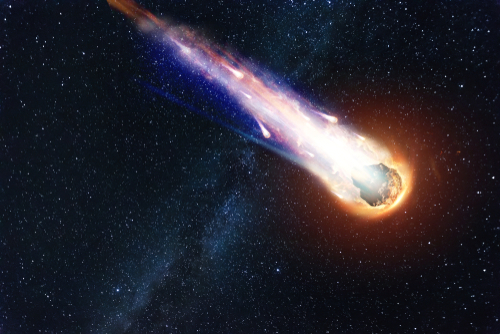
“Without a doubt, we’ve seen a few such effects on Jupiter in the course of recent years, suggesting that they’re somewhat normal,” Byrne says. “A smaller collision on Earth would be obliterating, yet Jupiter is so large it is by all accounts ready to shake off these sorts of occasions with no issue.”
Researchers accept that Jupiter’s sheer size redirects a portion of these effects from the remainder of the Solar System’s planets by taking them on itself. Indeed, a few researchers feel that this is the reason life on Earth has had the option to flourish.
October 21, 2021
Glacier Blankets
For a decade, tourists have been traveling to the high Alps of southern Switzerland with a wish to walk inside a glacier. In 1870, a regional family got the idea of digging a 100-metered shallow tunnel inside the Rhone glacier. Paying visitors could walk through a frozen alcove straight out of a fairy tale. However, in recent times, global warming has posed a grave threat to the glacier. With the slightest glacier movement, ice melts, so at the beginning of every summer season, the tourist cave has to be carved anew.
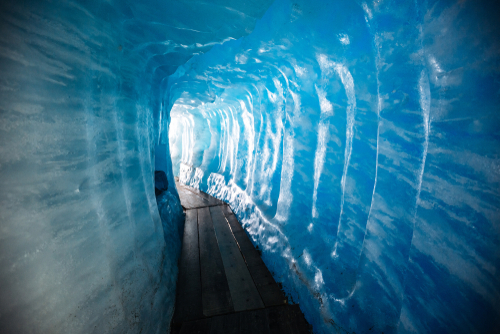
According to the experts, the glacier has changed in the last few years and is expected to entirely disappear in the coming years. To slow down the ice melting, the cave carving family suggested a solution of covering a portion of the glacier with protective fleece blankets to reflect the sunlight.
As a preventive measure, huge blankets or a polyester fleece might appear like a quick-fix or gimmick, but they could diminish seasonal melting by up to 70% each year during the summer months. It radiates the sun’s energy back into the atmosphere, avoiding melt and also preserving the ice that fell on the glacier during the winter. A handful of workers would then be needed to remove the blankets and utilize the fresh covering of snow to fill in the cracks on the glacier’s surface.

The primary goal of the government is to insulate the exposed glacier’s ice by reflecting most of the sun’s energy by using white fleece protectors. According to the Swiss government, 90% of its glaciers will be eliminated by the end of the century if no solution is found to cut down on greenhouse gas emissions.
According to the glacier experts, the size of the fleece blankets needs to be big enough to have any sort of effect. For this purpose, many workers are diligently sewing blankets together to cover the glaciers, whilst other countries, including Italy and Germany look set to be implementing this unique solution too.
October 14, 2021
Microwave-Powered Spacecraft
A group of researchers from the University of Tsukuba in Nagoya, Japan, is experimenting with ground-centered microwave pillars for controlling rockets with an aim to make the spacecraft lighter, as a significant portion of a rockets weight is taken by its fuel.
Technological advancements helped engineers.

A study published in the Journal of Spacecraft and Rockets says that during recent tests, the engineers managed to assign a tiny gliding four-rotor drone with a versatile microwave. This test was implemented for making sure that their idea was viable.
According to the engineers, they weren’t certain about the flexibility of their idea regarding the experiment, but these adjustments were made so that the microwave beams might not only enable the upgrading of an aircraft but also take a rocket into orbit someday.
Former experiments:
These researchers weren’t the first ones who implemented versatile spacecraft with a microwave beam. However, this latest attempt by researchers in Japan had stronger beams and advanced tracking systems, which made this experiment succeed where the former ones failed.

According to the head author and Tsukuba engineer Kohei Shimamura, the team of engineers used a futuristic beam tracking system for ensuring that the drone received maximum power. Furthermore, for improving the transmission efficiency, they carefully rearranged the microwave phase utilizing an analog phase sifter, which was integrated with a GPS. The propulsion technique might appear a bit unusual, but it was enough to maintain a four-engine drone upwards.
However, the technology is still quite premature, and it’s unlikely that we’ll get to witness microwave-powered NASA rockets going to space anytime soon. Presently, a huge obstacle is the energy that’s lost during the procedure. According to the examiners, the comprehensive energy efficiency obtained in the experiments was relatively low, reaching just a rate of 0.43%.
Currently, it’s still low, but more feasible than the 0.1% achieved in former experiments. Further work to tackle the problem of energy efficiency continues.
Shimamura evaluated that this outcome shows that more improvement is expected to further develop the transmission effectiveness and success for aircraft, space apparatus, and rockets of the future.
Even though microwave-controlled rocket propulsion is still in the initial phases, one day it could potentially be a better way of dispatching rockets into space without the massive fuel demands currently being used by conventional spacecraft.
October 7, 2021
Reengineering the Wooly Mammoth
Ever thought the giant sized tusked wooly elephants who went extinct some 10,000 years ago and only recently seen in animated movies & ancient history programs will come to life on this earth again? That’s exactly what US based startup Colossal Biosciences has announced and already secured funding of $15 million.
The project spearheaded by Harvard geneticist George Church aims to use CRISPR gene editing technology to engineer Asian elephant embryos with characteristics closest to the now extinct Wooly Mammoths. The idea is to create and then release these giants in the Arctic Tundra region in a bid to positively impact the ecosystem and play their role in environmental conservation. The scientists at Colossal Biosciences also believe that if they are successful in recreating the Wooly Mammoths, they might even be able to prevent the extinction of other endangered species.

Possible Hurdles that Scientists Face in Reengineering Mammoths
While it all sounds pretty fascinating, the whole idea or reintroducing the Wooly Mammoths into the wild will need a lot of thinking. There’s a lot that needs to be addressed before the scientists in George Church’s team attempt to recreate the giants. For instance, scientists are already questioning how will these giant Mammoths be gestated? While there is no mature technology for artificial wombs which could be used to gestate the Mammoth embryos, scientists around the world are quite skeptical about using an Asian elephant as the mother, which are listed as endangered species themselves.
Also, it must be considered that the present day human race knows very little about the Wooly Mammoths. With such little knowledge, releasing these giants into the Arctic Tundra is another point of concern.
Real Mammoths or Hybrids
Another big question being raised by scientists is that whether or not these Wooly Mammoths will be what Colossal Biosciences claims them to be. Asian elephants generally share 99% of their DNA with this particular mammoth species but with smaller ears and a stark shaggy coat, this animal will most likely be an elephant-mammoth hybrid and not the real ancient mammoths.
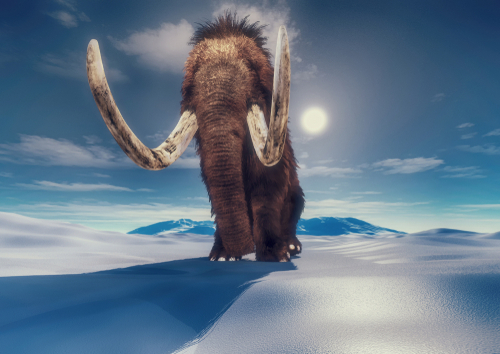
While researchers have previously discovered calves of wooly mammoths in the permafrost, scientists at Colossal Biosciences agree that it might be really hard to study the properties of the mammoth and that it is highly likely this project might very well be impossible to successfully complete.
What Does this Mean for Biosciences?
Church’s cofounder at Colossal, software entrepreneur Ben Lamm, said “I hope the tech could prevent the extinction of endangered mammals like elephants and rhinoceroses, or even let conservationists tinker with the genetic code of existing creatures to help them survive a changing climate.”
“We can leverage these genetic tools,” he further said, to “allow for species to not be isolated to one geographic location, but be adaptable to others.”
September 30, 2021
Nipah virus outbreak in India
The deadliest situation has arrived in Kerela, India after the outbreak of the extremely severe Nipah virus took the life of a twelve-year-old boy. After the diagnosis of brain swelling, the boy had been admitted to a private hospital. While figuring out how to treat this infectious Nipah virus is pretty much a work in progress, there have been significant advances.
Nonetheless, the Nipah virus remains a matter of concern not only in India but for the rest of the world as well. WHO classifies it as a “virus of concern” for future pandemics because it can be easily transmitted to a healthy person from the infected one, especially through the contaminated food.
Nipah Virus Vs Corona Virus:
According to a CBS news reports, Nipah is considered to be one of the most poisonous viruses to ever infect humans. Previously, the virus has killed more than 18 individuals who were infected. The disease is far less contagious than the Covid-19 pandemic which is still infecting thousands of people daily, although the availability of vaccines has reduced the impact of this virus. However, there’s still a possibility of neurological symptoms among the survivors.
However, the Nipah infection does not spread as quickly as Coronavirus does, mainly because of the short amount of time from infection to death.
Aftermath precautions:Following the boy’s death, public health authorities swung into action by connecting with the boy’s family, friends, and doctors. They identified and isolated at least 188 people who interacted with the boy physically. Additionally, they sealed off the entire area within about three miles from the boy’s residence in an attempt to prevent the spread of the virus.
As a consequence of this inspection, the healthcare assistants who treated the boy have shown the symptoms of the Nipah virus, and both of them have been hospitalized.
Besides Coronavirus, Nipah infection has been listed as a priority because of its great spreading potential. After the USA, India has the second-highest progressive covid-19 case count in the world.
Predictions about the virus:
In September 2020, the Chief Medical Advisor of the White House warned the public about the impending doom of the outbreaks of viruses, including Nipah and Corona. He evaluates that these viruses will enter the world of humanity and will only grow increasingly common.
Sociologically, the Nipah virus constantly appears in Southeast Asia. It is because the continuing environmental destruction has destroyed the wildlife and made the animals, including all the bat species to remain in closer proximity to human societies than ever before. To avoid this reunion, the Kerala officials are warning all the citizens to eschew bats and to trash any food that shows signs of insects taking a nibble.
In the long run, additional research will be completed on the Nipah virus and the development of effective treatments.
September 23, 2021
Life on Saturn’s Moon
For decades scientists around the world have been fascinated by the idea of finding life somewhere else in the universe, and now they might have found a place which they believe could harbor life.
Earlier in July, NASA announced that it had found the best clue yet about life elsewhere in the universe. NASA and the European Space Agency’s (ESA) Cassini-Huygens spacecraft collected evidence for a potential home for life on a moon of Saturn called Enceladus.
Commonly known as the ice moon, Enceladus is totally covered in ice and snow and for long has fascinated space scientists. Underneath the icy shell, and above the rocky core, Enceladus has an ocean of liquid water. The ice on the surface of the moon has large cracks through which the ocean is leaking and spewing water vapor geysers into space, all of which has been a source of great fascination for scientists and people alike.
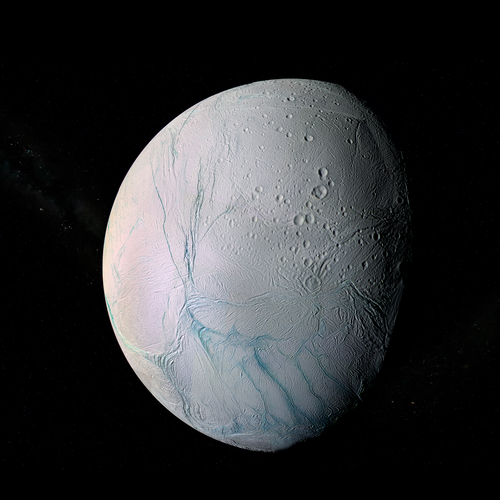
The spacecraft Cassini-Huygens flew through those geysers and sampled their chemical makeup, which indicates that there could be some form of a microbial activity going on at the bottom of the Enceladus Ocean. A study of the chemical makeup revealed that these plumes not only contained hydrogen but also a high concentration of methane, which is considered a very strong by-product of life and quite frequently associated with the hydrothermal vents at the bottom of the Earth’s oceans.
What Are Hydrothermal Vents?
When the cold water at the bottom of the ocean seeps through the rocks into the ocean floor passing around heat sources such as magma/lava, it leads to the formation of minerals & gases that are then spewed out in the water through hydrothermal vents. Microorganisms such as bacteria at the bottom of the ocean consume the dihydrogen produced in these gases as their source of energy, a process known as chemosynthesis, creating methane & carbon dioxide as a by-product. These bacteria are then consumed by clams, shrimps & crabs, thus creating an entire ecosystem in the darkness. Scientists have a strong reason to believe that if it is happening on the earth, it could be happening on the Saturn moon too.
Scientists Suggest Gases Come From Hydrothermal Activity by Extra Terrestrial Microbes
Researchers from the University of Arizona and Paris Sciences et Lettres University published a research paper in Nature Astronomy suggesting that the high concentration of methane in the plumes could literally mean microbial activity.
“We wanted to know: Could Earth-like microbes that ‘eat’ the dihydrogen and produce methane explain the surprisingly large amount of methane detected by Cassini?” said Regis Ferriere, an associate professor at the University of Arizona and the co-author of the study.
He further added that searching for such microbes, known as methanogens, at Enceladus’ seafloor would require extremely challenging deep-dive missions that are not in sight for several decades.
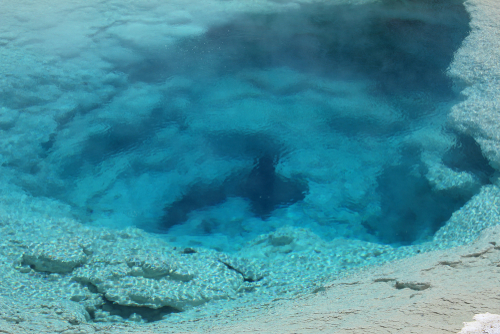
In their research, the scientists also constructed mathematical models & carried out computer simulations to study if the amount of methane found in the geysers actually suggested there was indeed some sort of microbial activity going on in the ocean of Enceladus.
“Obviously, we are not concluding that life exists in Enceladus’ ocean. Rather, we wanted to understand how likely it would be that Enceladus’ hydrothermal vents could be habitable to Earth-like microorganisms,” Ferriere concluded.
9 Other Places That May Support Life:
For decades, NASA has been launching space missions to find life elsewhere in the universe and has in fact concluded that in addition to Enceladus, the moon of Saturn, there are 9 other icy worlds that may support life. Scientists have been particularly excited about Europa, the moon of Jupiter, which is also covered in ice and has cracks on the surface spewing plumes out into the space, all of which appears to be exactly the same phenomenon that is happening at Enceladus.
If these ice worlds literally have these hydrothermal vents then it is likely that there could be marine communities where life could exist within this solar system and in order to confirm it scientists need to go back there and hunt in depth.



